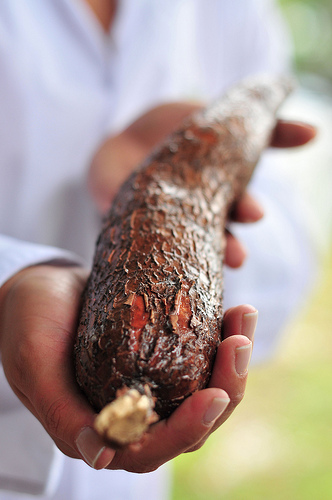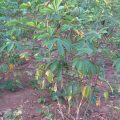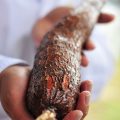Local researches on the use of cassava as feed ingredient have been adequately conducted even way back in the 70s and 80s. However, the livestock industry has not maximized the potential promise of the feed ingredient as partial replacement to corn for energy.

Cassava, scientifically known as Manihot esculenta, is one of the most important root crops in the Philippines.
It is known locally as balinghoy, balanghoy, or kamoteng-kahoy, and internationally it is known either as manioc or tapioca.
The versatility and multiple utility of this crop makes it economically promising, be it as human food, animal feed, medicine, alcohol, and for industrial uses like textile, binders, and as plain raw material in making biodegradable products.
In Asia, Thailand leads in the production, use, and export of cassava. From the 1.2 million hectare planted to cassava, production reaches about 22 million metric tons with an average root yield of 18.1 metric tons per hectare. Ninety-five percent of cassava being planted and produced is the industrial variety purposely for industrial use and export.
One of Thailand’s biggest importers is the European community. The imported chips or pellet is mainly use as animal feed.
In the Philippines, feed millers still opt to use feed corn or yellow corn sourced locally or abroad.
Only one big commercial feed company and a few small feed mills use cassava as part of their formulation. However, the use of cassava in diet follows cardinal rules to maximize the benefits from the ingredient.
Cassava in feed ration can replace about 30?50 percent of the corn. Too much cassava in feed ration or too much processing, however, can make the mixed feed unpalatable.
The use of cassava will also have a corresponding need to increase feed additives be it amino acids or vitamin-mineral mix.
At the end of the day, the successful use of cassava in animal feed is prompted by the degree of performance and productivity of the animals fed.
Another reason why feed millers do not use cassava is that the supply of cassava is not available in large volumes or not available at all times.
The country has about 217,000 hectares is planted to cassava with 2.1 million metric tons being produced annually. The average root yield is 9.7 metric tons per hectare (BAS, 2010).
Also, because of the high perishability of the fresh root crop, postharvest handling is relatively complicated.
The Thais use the leaves, stems, and roots of the cassava for feed. The leaves are either processed to leaf meals or pelleted and fed to ruminants. Pelleted leaf meals have been tried as replacement for soybean in feeds for swine and poultry.
Thus, the potentials of cassava as feed ingredient remains to be a “low hanging bunch of fruit ready for picking”. Technology is available and there is a vibrant industry ready to absorb the product.
Perhaps drivers to encourage planting of cassava as feed either through development programs, financing schemes, availability of postharvest processing, assured market, and even continuous generation of technology and innovation to further improve the feed value of cassava are possible options that can be considered.






